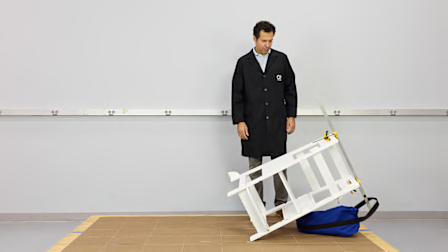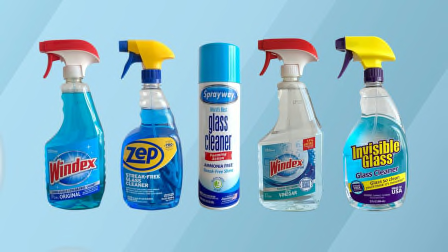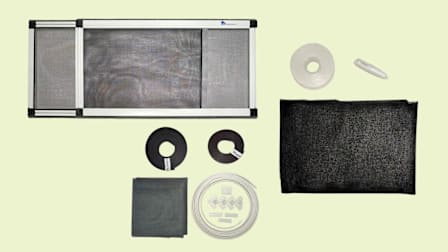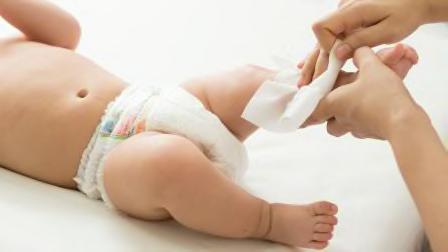What to Know Before You Buy the LifeVac Anti-Choking Device for Your Baby
Experts caution that while the product is promising, safety and effectiveness concerns exist
A few months ago, I was having dinner with my husband when I started to choke.
We’d had a fun and exciting day in Brooklyn for our baby shower and were in a great mood. We’d been surrounded by love and support all day, and things were looking bright. As I took a bite of my shrimp scampi and, at the same time, began to excitedly say something to him, the shrimp lodged in my throat and stopped me. I couldn’t speak; I couldn’t even cough. The only sound I could make was this awful inhuman squeak.
My husband got up, having performed the Heimlich maneuver on me before (I seem to have a problem with seafood), but I was also in my second trimester of pregnancy; the Heimlich requires modifications during pregnancy, and he wasn’t trained in those modifications. Not to mention there were two of us at risk if I succumbed to the shrimp.
What Is the LifeVac?
Created by the air freight entrepreneur Arthur Lih, the LifeVac is a one-time-use device for clearing objects out of the airway. It looks a lot like a small toilet plunger, with bellows that attach to a clear face mask that’s placed over the choking person’s nose and mouth. The person using the LifeVac pushes the bellows’ handles down, then quickly up. Air is forced out of the sides of the device, which creates a vacuum that (in theory) sucks the object out of the airway when the lever is immediately pulled back again. LifeVac says this replicates a forced cough to suction the object out of the choking person’s throat.
LifeVac is a Food and Drug Administration registered establishment, which is required of companies that produce or distribute medical devices in the U.S. “Importantly, registration with the FDA does not denote approval, clearance, or authorization of a firm or its devices,” an FDA spokesperson told me. “Devices are not ‘registered.’ The establishment is registered, and that provides location information if the FDA wishes to conduct an inspection of the facility.” The device isn’t approved, so its safety and effectiveness have not been established, the FDA said. Many Class II products, such as “vacuum-powered body fluid suction apparatuses,” are not required to be FDA-approved.
There are two mask sizes, one for children and the other for adults. The exact sizing limits are unclear. The company’s Frequently Asked Questions page says its manufacturer recommends the pediatric mask for children 22 pounds and up, but LifeVac goes on to claim that “the rescue device was used successfully under that weight recommendation saving infants’ lives.”
There’s no maximum weight limit given on the product page for the pediatric mask, nor is there a minimum weight limit provided for the adult mask. “Parents take it into their own hands if there’s an emergency” and they use the LifeVac on a child smaller than the limit set by the manufacturer, says Laura Bonelli, a spokesperson for LifeVac. “What we’ve published is testimonials that have told us that they made that decision on their own to use it on a child that is less than 22 pounds.” That said, the company has “done a lot of testing, and there is no harm” in using the LifeVac on a small infant, she says.
After using a mask to dislodge an object from a victim’s throat, customers can get a new LifeVac kit “for sanitary reasons.” They can fill out a form attesting that they saved a life using the LifeVac, information the company will use to verify the incident and send another kit free of charge, according to Bonelli. Technically speaking, you can use the product again, she says—it will work—but for sanitary reasons, it’s best not to.
LifeVac says its masks should be used after other airway obstruction methods have failed. “The standard for choking for an infant would be essentially a rotation of back slaps and chest compressions,” says Leonard Weiss, MD, an assistant professor of emergency medicine at the University of Pittsburgh School of Medicine. A back slap or blow involves holding the baby along your thigh with their head lower than their bottom, then hitting them between their shoulder blades. (Be sure to support the baby’s head while doing this.) If that doesn’t work, move on to chest compressions: With the baby facing up toward you, use two fingers on their chest and push down. According to Weiss, if the child is big enough to stand up on their own, you can, if necessary, proceed to the Heimlich maneuver. This involves thrusting the fists upward from just below the rib cage.
If none of this has worked, you can use the LifeVac, according to the company. For some people, for whom these standard airway obstruction methods can’t be used (LifeVac cites those in wheelchairs or with medical conditions as belonging to this group), the company says it’s safe to use its device right away.
“LifeVac has over 1,400 documented lives saved,” Bonelli says. “Over 900 of those saves were children, with no adverse effects reported. LifeVac is currently used in 22 countries around the world.”
What’s Wrong With the LifeVac?
Experts urge caution before running out to buy a LifeVac. “The reality is that these devices are not the standard of care or recommended by any major accrediting body, such as the American Academy of Pediatrics (AAP) or the International Liaison Committee on Resuscitation (ILCOR),” says Maneesha Agarwal, MD, an assistant professor of pediatrics and emergency medicine at Emory University in Atlanta and a member of the Injury-Free Coalition for Kids, a prevention program consisting of emergency medicine and pediatric physicians across the U.S.
Additionally, the American Red Cross told me it’s still “awaiting further studies and systematic reviews on these devices,” while the American Heart Association told me: “The data indicates chest thrusts, back slaps, and abdominal thrusts are feasible and effective for relieving severe foreign body airway obstructions. The AHA does not endorse or recommend the use of devices to remove foreign body airway obstructions.” The AAP told me that it does not have an official position on the LifeVac.
The FDA says that consumers should first rely on anti-choking guidelines established by the American Heart Association and American Red Cross, including abdominal thrusts, before using an anti-choking device. “Consumers should be aware that using anti-choking devices first could delay action, as consumers usually have to take them out of packaging, assemble them, and follow device instructions, which may delay the use of established rescue protocols,” it says.
LifeVac cites a number of studies that it says indicate its effectiveness. A 2021 manikin trial had a 99 percent success rate when medical student participants used a LifeVac to remove an object from a manikin’s throat. The study authors say medical students may be better equipped to ensure that the LifeVac generates an adequate seal around the choking victim’s face than the general public. Another study, published in 2020, documented 21 pediatric patients over 6 years who all recovered after using the LifeVac during a choking emergency. This data was self-reported.
Even with these studies, the research on the LifeVac is still “sparse and limited to cadaver and manikin studies and case reports,” Agarwal says. And because the product itself isn’t recommended for children under 22 pounds, it isn’t meant for most babies and smaller toddlers. Case reports suggest high success rates, though Agarwal says families might not report device failures. Plus, according to Rice, most of the research on the LifeVac has focused on adults, which makes it difficult to say how effective the product is with children.
Not all research on the LifeVac is positive. One small 2023 study on its efficacy and that of another anti-choking device, the DeChoker, found that while the LifeVac was able to expel softened saltines from the throat of a fresh cadaver, it wasn’t able to remove cashews or whole grapes. Both also caused swelling and blood pooling in the cadaver’s mouth. (The DeChoker failed to remove any of the obstructions, even the saltines.) In the study’s conclusion, the researchers urged consumers to consider their findings before using a LifeVac or DeChoker, and continue to rely on back blows and abdominal thrusts. Additional independent studies are necessary, the authors said, before devices such as the LifeVac or DeChoker could be marketed even as a second option in a choking emergency.
Worth noting, though, is how difficult it is to conduct choking research. Researchers primarily rely on plastic manikins (like those you use in a cardiopulmonary resuscitation or CPR class) or cadavers, neither of which are 100 percent applicable to a child choking. Conducting research on (living) adults isn’t much easier. “It’s not like [researchers are going to be like], sign right here if you want to be in this research study while you’re actively choking,” says Alexander Arroyo, MD, the director of pediatric emergency medicine at Maimonides Medical Center in Brooklyn, N.Y.
What to Use Instead of the LifeVac
To bring it back around to the delicious but hazardous shrimp scampi I ate and choked on this summer: What should my husband have been prepared to do if not the traditional Heimlich maneuver? And what if our child, endeavoring upon his own adventure with shellfish, should experience the same? There’s a more time-tested method than the LifeVac: a simple modified Heimlich.
“I would take the basic life-support skills classes if you’re a parent, and that would include CPR, AED [a defibrillator], and choking,” Weiss says. “They’re there, they’re available, they are vetted by science.” The American Red Cross has an online first aid, CPR, and AED class for $37, while the American Heart Association offers an infant CPR kit that includes an instructional DVD and an infant manikin for $45.
Agarwal agrees, and also advises keeping your child away from choking hazards as much as possible. “Parents should keep their children away from common choking hazards, including nuts, seeds, whole grapes, raw carrots, raw apples, popcorn, chunks of peanut butter, hard candies, marshmallows, hot dogs, bones, latex balloons, small toys, and other risky objects,” she says. (I choked on a hot dog as a kid—I remember the moment vividly—and will keep my own baby away from hot dogs for many years, despite my noted love for them.) The Department of Agriculture has a helpful reference document for preventing choking (PDF).
Weiss is hopeful that researchers will continue to study the LifeVac. “I have a 10½-month-old. It’s my first child, and even as a healthcare provider, my paranoia has escalated beyond all imagination,” he says. But that doesn’t mean he’s rushing out to get a LifeVac for his own home—even though conceptually, the product makes total sense. “If it could work effectively and without causing more harm, and we have that established by clinical trials and then the FDA approves it for either professionals or lay people to use—I imagine most clinicians would support that. But really until that happens, we can’t use it.”
Looks like I’ll be spending the next few weekends taking an infant first aid class—and enlisting my husband to take one for adults, just in case I end up ordering that incredible shrimp scampi again.
Editor’s Note: This article, originally published on Oct. 19, 2023, has been updated to include information about a safety communication about choking rescue protocols, which was published by the Food and Drug Administration on April 22, 2024.
Clarification: This article has been updated to clarify the LifeVac’s FDA status, to provide additional information from peer-reviewed studies, and to include a statement from LifeVac.

















